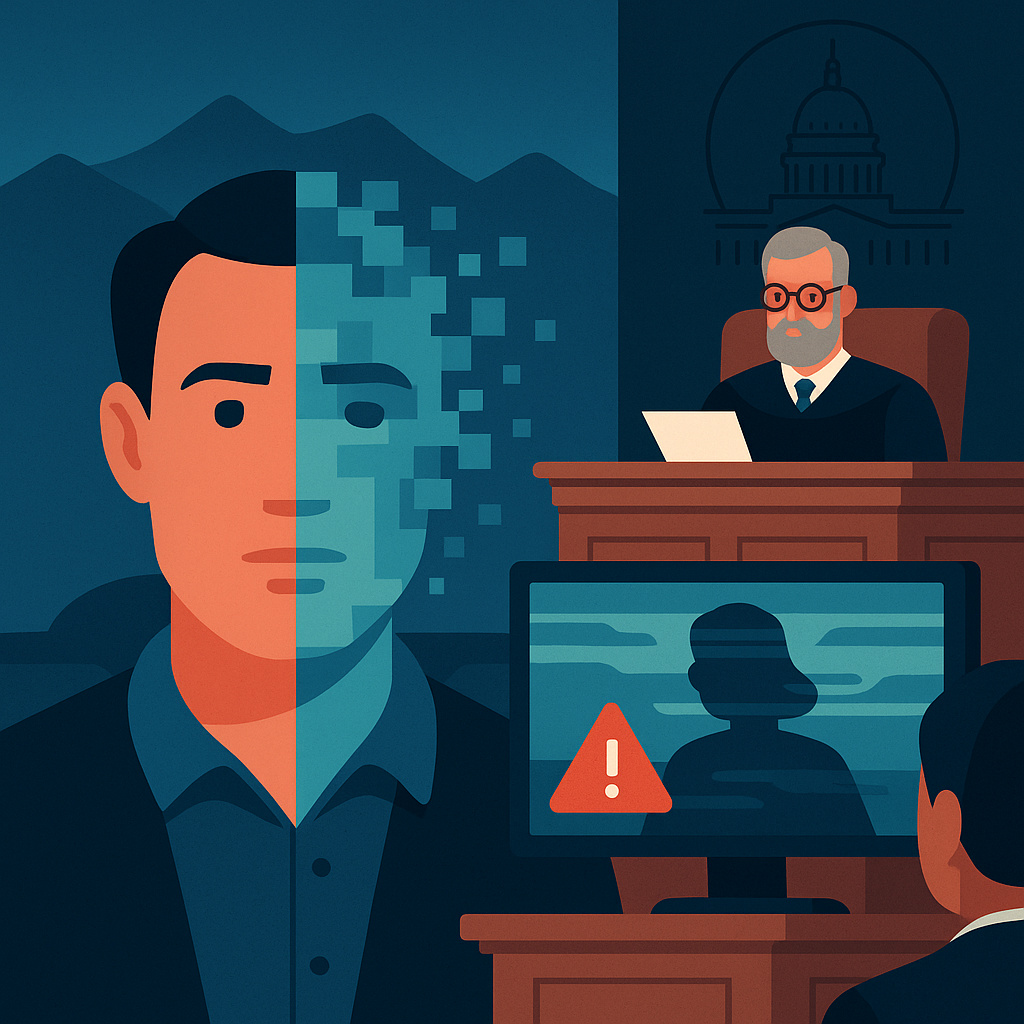Criminal law in Utah and deepfake or AI-generated evidence
How Utah criminal courts handle deepfakes, synthetic media, and AI-generated evidence in real cases
Artificial intelligence is reshaping how evidence is created, challenged, and understood in Utah criminal courts. Deepfake videos, AI-generated audio, synthetic photos, and algorithmically altered metadata make it harder to answer a once-simple question: is the evidence real?
Utah Law Explained breaks down how prosecutors, defense lawyers, and judges evaluate AI-generated material, what authentication looks like under Utah rules, and how criminal impersonation and digital-privacy laws apply when deepfakes are used to harm or deceive others.
Overview: How Utah Courts Approach AI-Generated Evidence
Utah courts rely on long-standing evidence rules, but those rules now meet new challenges when AI enters the picture. The biggest issues involve:
- Whether AI-generated content can be authenticated
- Whether metadata and chain-of-custody records are intact
- Whether the content violates privacy or impersonation statutes
- Whether expert testimony is required to explain how the content was created
In Utah, the party introducing a video, audio clip, image, or document must show it is what they claim it is. With deepfakes, that burden is harder to meet because synthetic media can be nearly indistinguishable from real recordings.
Admissibility Standards for Synthetic Media
Utah uses Rule 901 of the Utah Rules of Evidence, which requires enough proof to show that a piece of evidence is authentic. For AI-altered material, courts often expect supporting proof such as:
Chain of Custody and Metadata Checks
Chain of custody matters even more with deepfakes because the risk of alteration is high. Utah digital-forensics teams typically examine:
- Timestamps and any available geolocation data
- File-creation and modification history across devices
- Hash values before and after transfers or downloads
- How the evidence was stored, preserved, and collected
A break in the chain of custody does not automatically exclude the evidence, but it gives defense attorneys an opening to challenge reliability. Judges weigh how serious the gaps are and whether there is enough other proof to trust what the file shows.
Utah Criminal Impersonation and Deepfakes
Deepfake technology is increasingly used for impersonation, harassment, and fraud. Even if a fake video never makes it into evidence, the act of creating or sharing it can trigger Utah criminal statutes, including:
- Criminal impersonation and identity-related offenses
- Identity fraud and computer-crime statutes
- Harassment, cyberstalking, or intimidation crimes
- Voyeurism or distribution-of-intimate-images laws in sensitive cases
A deepfake used to mimic a defendant, victim, or witness can lead to additional charges and can also undermine the legitimacy of evidence presented during a criminal case.
Expert Testimony and AI Content
Utah judges frequently rely on digital-forensics experts when AI-generated media is disputed. Experts may testify about:
- Whether the file shows signs of manipulation
- Whether AI-based artifacts or inconsistencies are present
- How deepfake models typically distort frames, lighting, or audio
- What level of certainty exists regarding authenticity
Expert testimony helps courts apply Utah reliability standards without requiring judges or jurors to understand every technical detail about AI. The goal is to translate complex analysis into plain, credible explanations the court can use.
How Utah Courts Review AI-Generated Evidence (Chart)
This chart summarizes the main review points Utah courts consider when deepfakes or other AI-generated files are offered as evidence:
| Category | What Utah Courts Look For |
|---|---|
| Authenticity | Metadata, hash values, original source files, and eyewitness context that match the story behind the media. |
| Chain of custody | Storage logs, collection notes, and clear transfer steps that limit chances of silent editing. |
| Technical manipulation | AI artifacts, frame inconsistencies, audio glitches, or other forensic red flags of a synthetic file. |
| Legal concerns | Possible impersonation crimes, privacy violations, unfair prejudice, or misleading content. |
| Expert review | Forensic testimony explaining how the content was created, tested, and how confident the expert is in their conclusion. |
Q&A: Deepfakes and Criminal Evidence in Utah
Q: Are deepfake videos automatically inadmissible in Utah?
A: No. Utah courts evaluate them under traditional authentication standards. They must be shown to be reliable, properly sourced, and not misleading.
Q: Can AI-generated audio or screenshots be used as evidence?
A: Yes, but the party offering them must prove authenticity. For AI-generated materials, this often requires expert analysis and clear supporting proof.
Q: What if a defendant claims an incriminating video is a deepfake?
A: Utah courts may order forensic evaluation. Judges look for inconsistencies, metadata anomalies, and evidence that the file came from a trustworthy source.
Q: Can someone be charged for making a deepfake of another person?
A: Depending on intent and content, Utah criminal laws on impersonation, harassment, computer crime, or image-based abuse may apply.
Q: Can police use AI tools to create evidence?
A: AI tools can assist investigations, but law enforcement cannot fabricate evidence. Courts scrutinize any AI-generated material extremely closely.
YouTube & Instagram: Deepfakes, AI, and the Law
YouTube: Deepfakes and AI Evidence
Instagram: Deepfake Risks & Courtroom Trends
As Deepfakes Evolve, So Does Utah Criminal Law
As AI tools grow more advanced, Utah courts are developing new ways to test whether digital evidence reflects reality or fabrication. Deepfakes will continue to challenge how judges, attorneys, and juries evaluate truth, but careful authentication, expert review, and strong procedural protections help keep the justice system grounded.
Talk to a Utah Criminal Defense AttorneyUtah Law Explained will keep tracking how AI evolves in Utah law and what ordinary Utahns need to know as technology reshapes the courtroom. For more plain-English legal guidance, stay updated with Utah Law Explained, explore our mission on the About Us page, or connect with trusted counsel like Gibb Law Firm.
